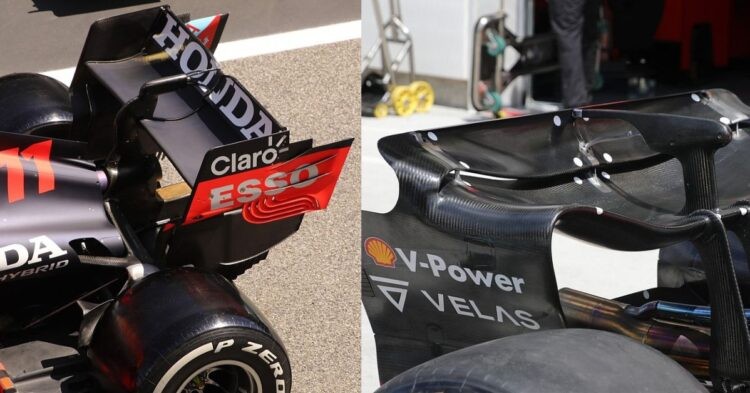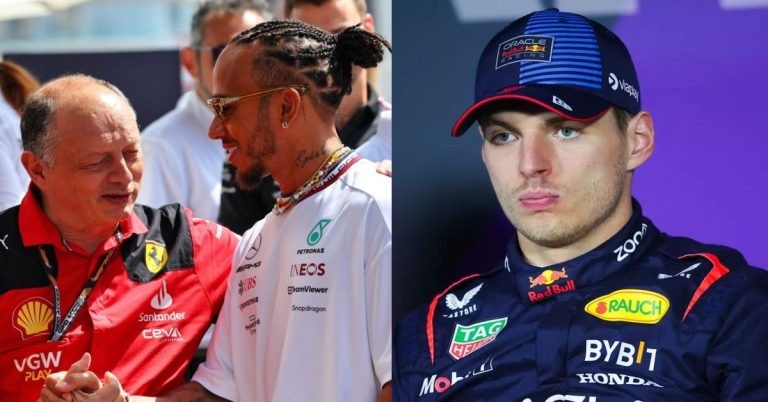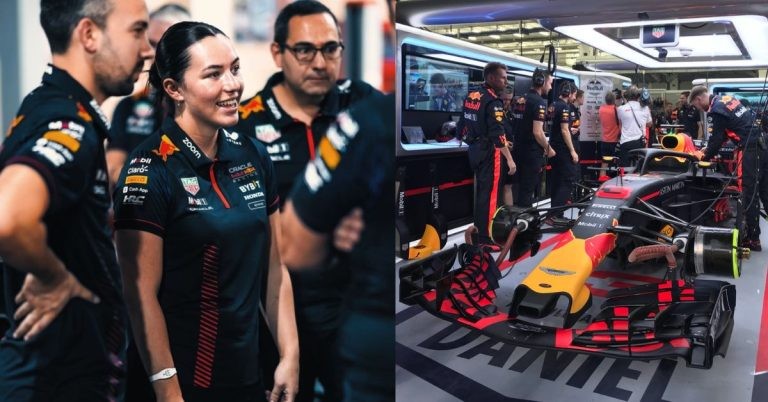DRS is a system used by the teams to get a critical boost in their race. In Formula One (F1), the “dirty air” phenomenon refers to the turbulent air created behind a leading car when it travels at high speeds. Because the turbulent air disrupts the flow of air over the car, causing a loss of downforce and a decrease in grip, it is difficult for the car behind to follow closely.
Downforce is the force that keeps a car on the track and assists it in turning at high speeds. When a car follows closely behind another car, the disturbed air from the leading car reduces the following car’s downforce, making it more difficult to stay on the track and maintain speed through corners.
This effect is especially noticeable on high-speed tracks, where downforce is essential for achieving high cornering speeds. The dirty air phenomenon is one of the reasons why it can be challenging to overtake in F1, as drivers often struggle to follow closely enough to the car in front to make a passing move.
This year, the DRS zone on the main straight will be 80m shorter ➡️ two consequences:
— F1 Data Analysis 📈 (@F1DataAnalysis) March 1, 2023
1)Overtaking there will be harder, and drivers will favour attacking in the following straight
2)Having lower drag will be more important, especially through the upper plane#F1 #BahrainGP pic.twitter.com/NBwnjoQvXJ
To combat this issue, the Drag Reduction System has been in use since 2011 which essentially gives the driver that is 1 second behind the car in front, a boost to overcome the ‘dirty air’ effect. The DRS effect essentially opens up the flap in the center of the rear wing which reduces the drag and allows the car to reach top speed momentarily. FIA wants to promote wheel-to-wheel racing, but the dirty air phenomenon makes it essential to employ DRS to mitigate it.
While its power has been deemed excessive on numerous occasions, and passes have occurred well before braking zones on straights, the tool is generally aimed at assisting in overtaking when drivers would otherwise be stuck in dirty, turbulent air.
How is DRS activated and what are the zones?
When a driver is in overtaking range, i.e., within a difference of 1 second to the car in front, and in one of the designated DRS zones, which are usually long straights, the dash lights on the steering wheels are activated. These let the driver know that they can execute a DRS maneuver.
Overtake #181:
— OvertakeCentral (@OvertakeCentral) March 6, 2023
Fernando Alonso on Lewis Hamilton (2023 Bahrain Grand Prix) pic.twitter.com/NSGd9Yu3zT
The car in front also usually gets a warning that the car behind it is priming for DRS. On activating the DRS button on the steering wheel, the car’s rear wing flap with open up allowing the car to gain a boost to overtake the car in front. The DRS can be deactivated by either stepping on the brakes or releasing the accelerator or by pushing the DRS button for the second time. The flap shuts down and the drag builds up again.
If drivers are concerned about the aerodynamic load remounting to the full rear wing and potentially causing corner entry destabilization, they can shut the wing before braking into a corner.
Another interesting fact about DRS is that it can be used for defending too, but for that, the car in front has to be within DRS range of the car in front of that.
The world before and after DRS is enabled at #MonacoGP #F1 pic.twitter.com/hFzYKazvRT
— PlanetF1 (@Planet_F1) May 29, 2022
Some memorable DRS moves that have taken place include Vettel’s overtake of Bottas in the 2017 Spanish GP, Hamilton’s overtake of Fernando Alonso, Nico Hulkenberg, and Esteban Ocon in the 2018 Bahrain GP and Leclerc’s overtake of Sergio Perez in the 2021 Austrian GP.
F1 returned to ground effect rules in 2022 to reduce the dirty air effect and increase wheel-to-wheel passing. While this is widely believed to have worked, the modified aerodynamics have reduced the slipstream effect.










